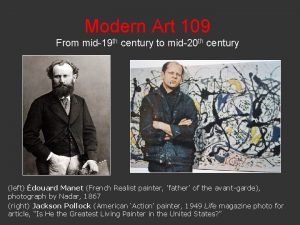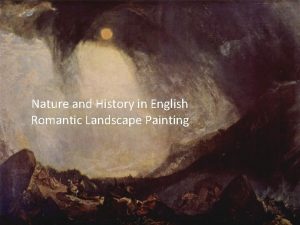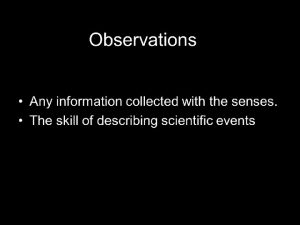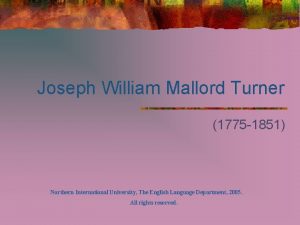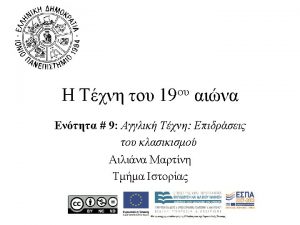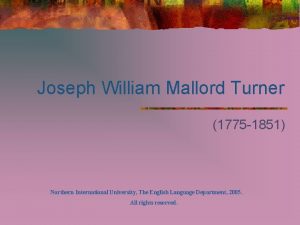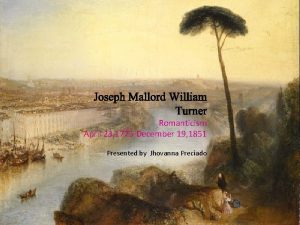Willam Turner 1775 1851 An English romantic landscape










- Slides: 10

Willam Turner 1775 -1851

• An English romantic landscape and seascape painter, watercolorist and printmaker. • Is known to have laid the foundation for impressionism. • Interest in brilliant colors. • Convincing truth and profound realism in depicting nature. • Fascinating beauty and lyric charm.

Subject matters of turner’s paintings • Vehicles for Turner’s imagination were to be found in the subjects of shipwrecks, fires, natural catastrophes, and natural phenomena. • The painter drew inspiration in waves and storms and clouds had a keen interest in depicting ruins and frowning mountains. • After 1802 begins to choose subjects from agricultural or pastoral country.

Lifelong absorption with the sea Turner’s love of the sea was fundamental in his creative work. He executed profound and forceful representation of everchanging marine scenes in which the value of his splendid visual memory and manual dexterity are evident for he believed that a wave cannot be drawn slowly and stolidly.

The attitude to human beings in turner’s works • Turner placed human beings in many of his paintings to indicate his affection for humanity on the one hand its vulnerability and vulgarity amid the awe-inspiring, savage grandeur of the natural world on the other hand. • In some of his paintings turner is vindicated as a draughtsman of people. • All his characters are living individuals.

• • • Peculiarities of style Turner’s mature work is characterized by a chromatic palette and broadly applied atmospheric washes of paint. The significance of light was to him the emanation of God’s spirit. Turner’s works of art are characterized by sloven brushwork. He refined the subject matters of his later paintings by leaving out solid objects and detail, concentrating on the play of light and colour. The artist who could most “stirringly and truthfully measure the moods of nature”. In his later years he used oils ever more transparently, and turned to an evocation of almost pure light by the use of shimmering colour.

Rain, Steam and Speed - The Great Western Railway; the painting depicts an early locomotive of the Great Western Railway crossing the River Thames on Brunel's recently completed Maidenhead Railway Bridge. The painting is also credited for allowing a glimpse of the Romantic strife within Turner and his contemporaries over the issue of the technological advancement during the Industrial Revolution

The Burning of the Houses of Parliament Turner witnessed the fire that burnt down most of the Palace of Westminster on 16 October 1834. He made a watercolour sketch at the time, which he then used as the basis of several larger paintings. As well as this one, he also painted a more distant view with the same title (now at the Cleveland Museum of Art) and The Burning of the Houses of Parliament (Tate Gallery)


The slave ship The first impression that the painting creates is of an enormous deep-red sunset over a stormy sea, an indication of an approaching typhoon. [4] Upon closer inspection one can discern a ship sailing off into the distance. The masts of the ship are red, matching the blood-red colour of the sky and the sickly copper colour of the water, which serves to blur the lines between various objects in the painting. [2] The ship's sails are furled, revealing that it is preparing for the typhoon. In the foreground can be seen a number of bodies floating in the water; their dark skin and chained hands and feet indicate that they are slaves, thrown overboard from the ship. Looking even more carefully, one can see fish and sea monsters swimming in the water, possibly preparing to eat the slaves, and sea gulls circling overhead above the chaos.

